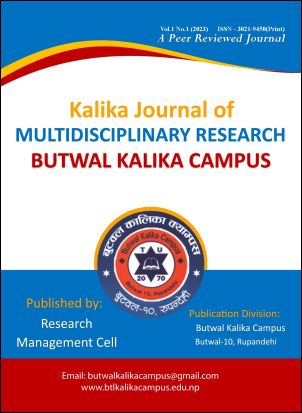An Overview of Financial Inclusion in Nepal
DOI:
https://doi.org/10.3126/kjmr.v1i1.61485Keywords:
Economic growth, Financial inclusion, formal financial services, low-income populationAbstract
This article provides an overview of financial inclusion in Nepal, which refers to the availability of financial services and products to individuals and businesses, particularly those in disadvantaged and low-income regions. The research methodology employed in this study is descriptive research. The documents which were published by the government were analyzed. Nepal Rastra Bank (NRB) and the Ministry of Finance were primary sources of information. These reports contained valuable insights into financial inclusion, economic growth indicators, and program outcomes. Microfinance institutions have been instrumental in advancing financial inclusion in Nepal, offering financial services to low-income people and small enterprises that would not otherwise have access to the official banking system. There is a positive association between financial inclusion and economic growth in Nepal, as access to credit and the use of formal financial services have contributed to short- and long-term economic growth. Similarly, financial inclusion has a positive impact on the economy by increasing the savings rate, broadening credit availability, lowering income inequality, supporting financial stability, and encouraging the expansion of the digital economy. The government of Nepal has implemented various initiatives to encourage financial inclusion, including expanding credit availability, promoting financial stability, and encouraging the growth of the digital economy. Overall, financial inclusion is seen as a crucial component of economic progress and is expected to become even more important as Nepal continues to develop.




